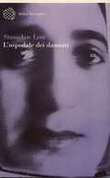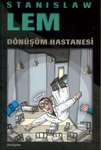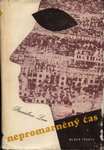
„The Hospital of Transfiguration” marks the beginning of Lem's writing. It is a different novel – contemporary, even a „war novel”. Yet the author managed – within the confinement of a psychiatric hospital, separated from the outside world – to stage a drama of one man strangely torn between his mind and body, desperately seeking meaning of life and trying to save his ethical instinct in the face of the new European nihilism attacking both from the outside and from the inside – in the form of a disease of the soul. Contrary to what might seem in „Hospital of Transfiguration” lie the roots of the most important of Lem's science fiction works.
 "Hospital of the Transfiguration" is the pensive story of Stefan Trzyniecki, a directionless, despairing young doctor who takes a job at a provincial Polish mental hospital at the outset of the war. There he confronts the absurdity of life through events that occur both inside and outside the asylum walls. Many of the hallmarks of Mr. Lem's mature science fiction style are present in this melancholy work of realism - the penchant for metaphysical discourse, the command of technical details, the flashes of humor.
"Hospital of the Transfiguration" is the pensive story of Stefan Trzyniecki, a directionless, despairing young doctor who takes a job at a provincial Polish mental hospital at the outset of the war. There he confronts the absurdity of life through events that occur both inside and outside the asylum walls. Many of the hallmarks of Mr. Lem's mature science fiction style are present in this melancholy work of realism - the penchant for metaphysical discourse, the command of technical details, the flashes of humor.
Thomas Swick "The New York Times Books Review"
 Every few weeks I had to take a night train and travel to Warsaw - I took the cheapest class since I was quite poor in those times - for endless discussions at the publishing house "Ksiazka i Wiedza". They tortured my Hospital of the Transfiguration, the number of critical reviews was continually growing and all of them proved the book's counterrevolutionary and decadent nature. I was told that this and that had to be redone... And since at the same time they gave me hope the book would eventually be published I kept on writing and revising... Because Hospital of the Transfiguration was considered improper from the "ideological point of view" I was obliged to write further episodes in order to achieve a "compositional balance"... I must admit that despite the fact that I have the habit of writing several versions no one ever made me rewrite a novel so many times... But none of it helped; the book was published only after more freedom of speech was granted by the Polish October (1956).
Every few weeks I had to take a night train and travel to Warsaw - I took the cheapest class since I was quite poor in those times - for endless discussions at the publishing house "Ksiazka i Wiedza". They tortured my Hospital of the Transfiguration, the number of critical reviews was continually growing and all of them proved the book's counterrevolutionary and decadent nature. I was told that this and that had to be redone... And since at the same time they gave me hope the book would eventually be published I kept on writing and revising... Because Hospital of the Transfiguration was considered improper from the "ideological point of view" I was obliged to write further episodes in order to achieve a "compositional balance"... I must admit that despite the fact that I have the habit of writing several versions no one ever made me rewrite a novel so many times... But none of it helped; the book was published only after more freedom of speech was granted by the Polish October (1956).
 A Country Funeral
A Country Funeral
The train stopped briefly in Nieczawy. Stefan had barely pushed through the crowd to the doors and jumped off when the locomotive wheezed and the wheels began to drum behind him. For an hour he had been worrying that he would miss his stop; that problem had overshadowed all others, even the goal of the journey itself. Now, breathing sharp outdoor air after the stuffiness of the train, he walked uncertainly, squinting in the sun, at once liberated and helpless, as if he had been jolted out of a deep sleep. It was one of the last days of February and the sky was streaked with light clouds pale at their edges. The snow had been partly melted by the thaw and sat heavily in tire hollows and gorges, exposing clumps of brush and bushes, blackening the road with mud and baring the clay hillsides. Chaos, harbinger of change, had appeared in a landscape once uniformly white.
An insane asylum as refuge from the madness of Nazi-occupied Poland in World War II - at first glance, the metaphor seems hopelessly trite. Yet this skillful, semiautobiographical first novel just skirts the edge of allegory, and its author's artistry steers it gracefully away from the dangers of cliche. But then it's no ordinary first novel. The Polish author Stanislaw Lem wrote it in 1948, long before he achieved fame as one of the world's leading contemporary science fiction writers. Now published in English for the first time in a solid translation by William Brand,, ''Hospital of the Transfiguration'' is the pensive story of Stefan Trzyniecki, a directionless, despairing young doctor who takes a job at a provincial Polish mental hospital at the outset of the war. There he confronts the absurdity of life through events that occur both inside and outside the asylum walls. Many of the hallmarks of Mr. Lem's mature science fiction style are present in this melancholy work of realism - the penchant for metaphysical discourse, the command of technical details, the flashes of humor. If it suffers from some of the common weaknesses of a first novel - occasionally excessive bursts of passion, a certain disjointedness - it is nevertheless strong testimony to the profound understanding of people and life that underlies even the lasers and spaceships of Mr. Lem's better-known oeuvre.
The New York Times Book Review
A version of this review appeared in print on October 30, 1988, on page 726 of the New York edition.














